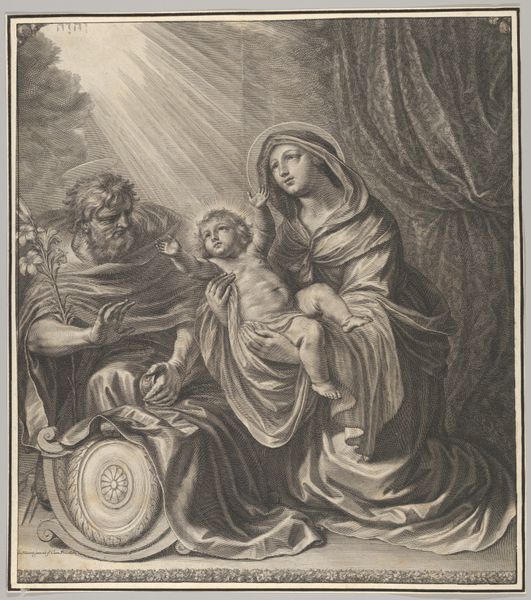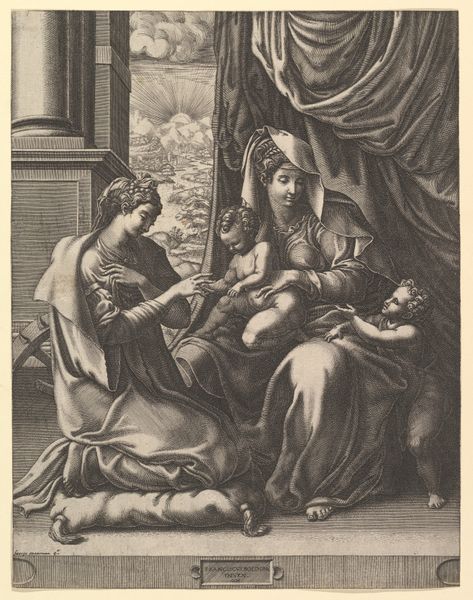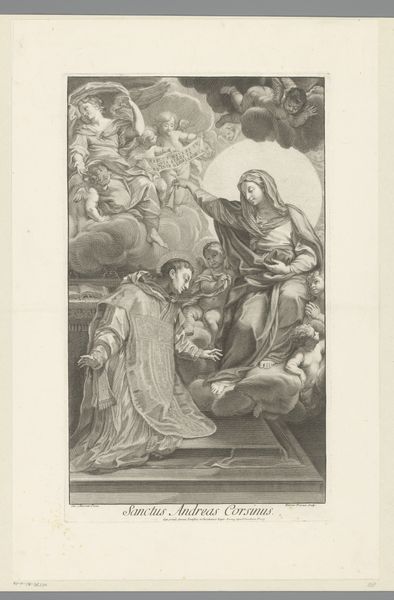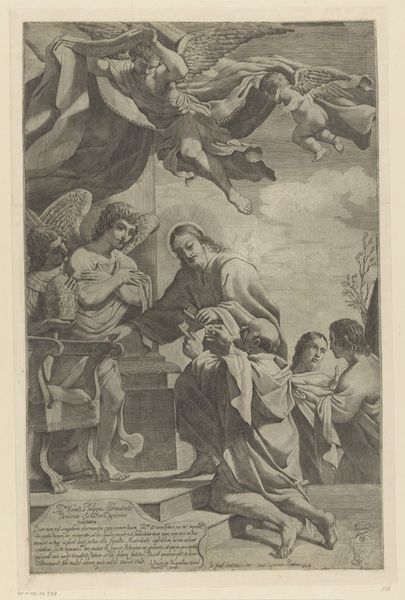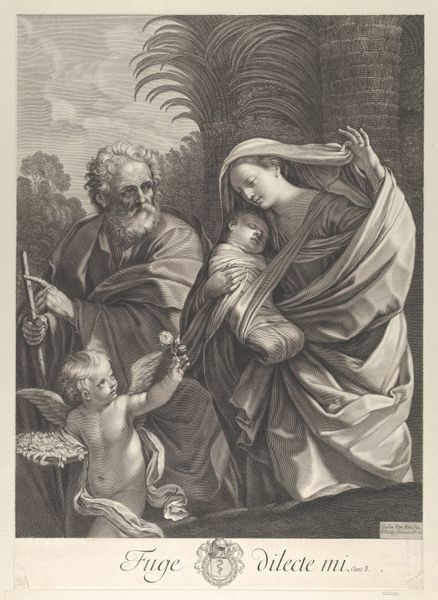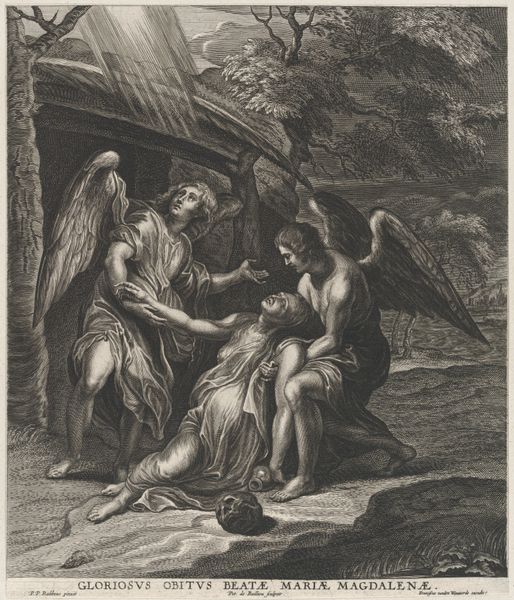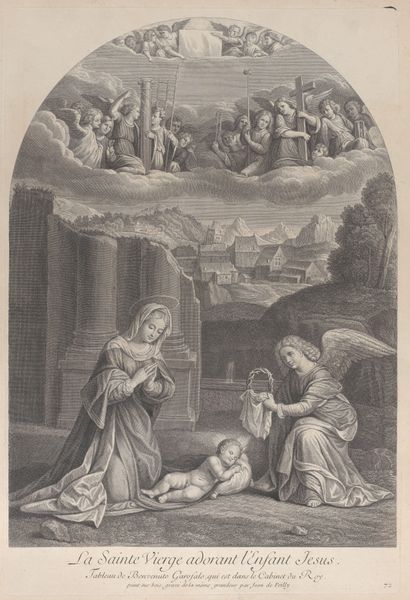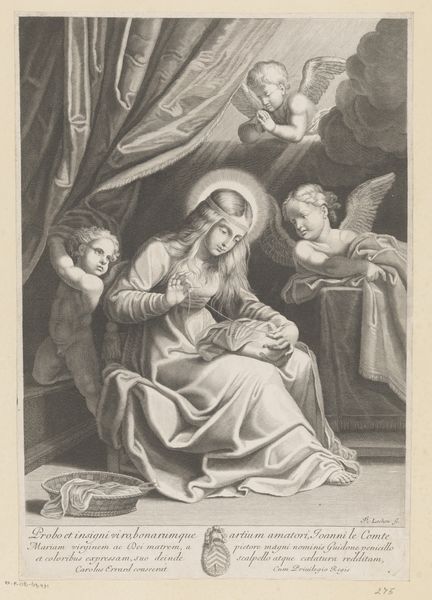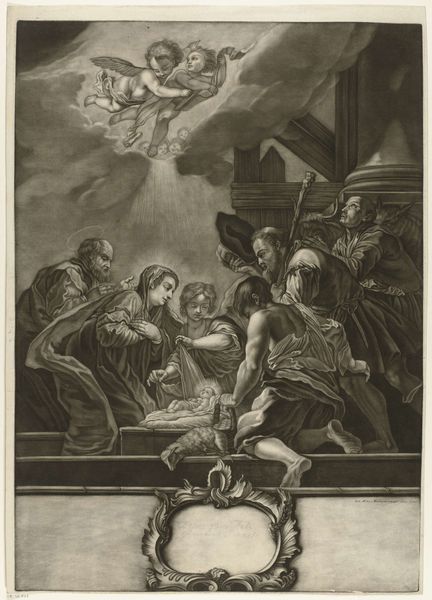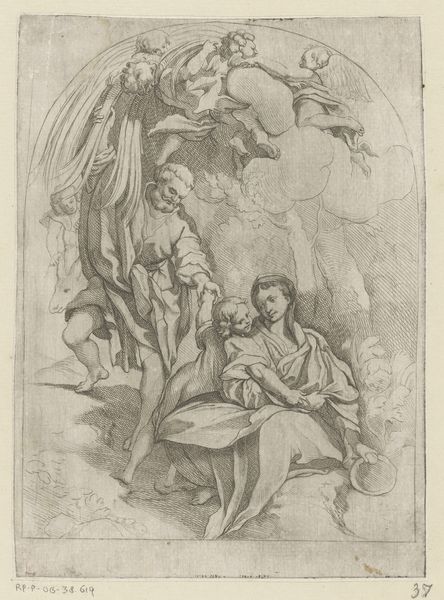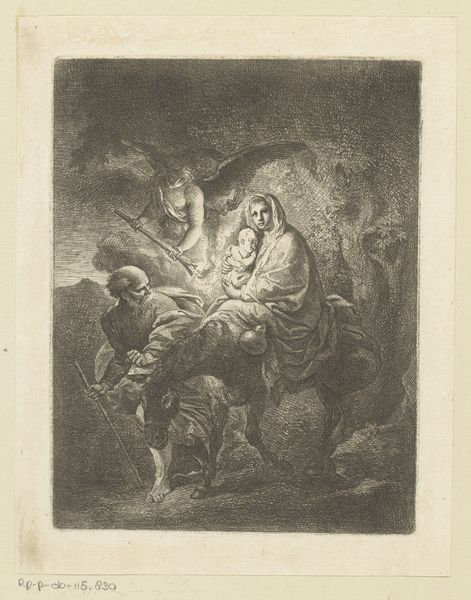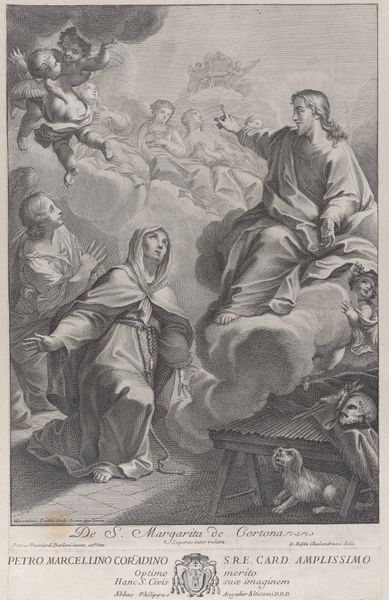
Plate 6: Saint Joseph's dream, with the Virgin Mary at left and an angel above who points to the Holy Spirit 1777
0:00
0:00
Dimensions: Sheet (Trimmed): 19 11/16 × 12 1/2 in. (50 × 31.8 cm)
Copyright: Public Domain
Curator: This print, created by Benedetto Eredi in 1777, is entitled "Plate 6: Saint Joseph's dream, with the Virgin Mary at left and an angel above who points to the Holy Spirit." It is currently held at the Metropolitan Museum of Art. Editor: The density of figures is captivating; you’ve got Mary standing solemnly to the left, a dreaming Joseph slumped forward to the right, and then this whole cloud of cherubs, plus the angel, with God symbolized by a dove in the center…it's overwhelming, honestly. It evokes feelings of divine order imposed upon a very human scene of fatigue. Curator: Absolutely. Eredi, working in the Baroque style, deftly portrays the theophoric moment that sets the stage for Jesus's life through dreamscapes and narrative allegories, drawing a strong correlation to the themes prevalent during that particular time. Joseph's dream represents, more broadly, a turning point, where religious ideology shapes identity and dictates both personal and political futures. Editor: And how are the class dynamics playing out? The clothing looks very coarse, but this print probably had a wealthy patron, which reveals some tension in how this narrative intersects with everyday life. The act of production through engraving itself would have required specialized labor. Were the material constraints affecting how religious narratives get visually disseminated to certain segments of society, solidifying power dynamics? Curator: An interesting point. Consider also that depicting biblical figures as "everyday people" can serve the propagandist needs of the church, making divine will more easily accessible or palatable for specific demographics in a society dealing with poverty. Mary's downcast eyes speak volumes in that context, as the art form has agency in molding social mores around gender roles. Editor: These engravings rely on precise work. You have these lines and dots created with a burin in metal; and the transfer of that labor from one state to another—it is so indirect! We cannot overlook this medium as mere “reproduction”, but an active means of mediating ideas on class. Curator: Yes, a means that renders the sacred attainable. That is its power. I've always seen that access—whether the means of the materials, or simply what is being symbolized— as something utterly revolutionary. Editor: Well said, thinking about this again in terms of consumption of printed materials makes this piece even more dynamic.
Comments
No comments
Be the first to comment and join the conversation on the ultimate creative platform.


